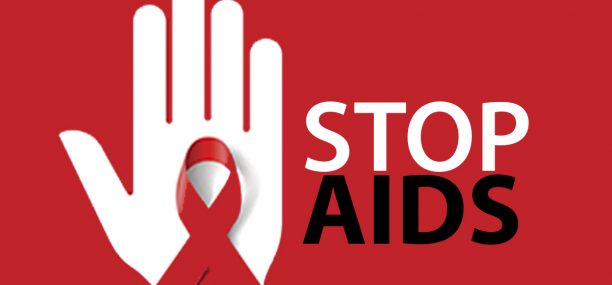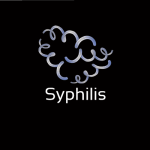AIDS Infection Causes Symptoms and Treatment
Definition
What is HIV infection and aids?
AIDS or acquired immunodeficiency syndrome is the final and most severe stage of HIV infection characterized by decreased CD4 count (lymphocytes). The immune system in patients with AIDS is severely compromised which can lead to recurrent infections, malignancies and ultimately death.[1]
Where did HIV come from?
AIDS was first recognized in 1981, and in 1983 HIV virus was isolated and identified by researchers at the Pasteur Institute.[12][16][17] However, The first known case of HIV-1 infection in a human was detected in a blood sample collected in 1959 from a Congolese man in Kinshasa.[13][14][15]
How did AIDS spread from apes to humans?
People in the Democratic Republic of the Congo (formerly Zaire) have some weird customs when it comes to sex. They have sacred sexual rituals and they usually engage in sex with the Bonobos (pygmy chimpanzee). Bonobos are known to be found between the congo River, the Lomami River, the Kasai/Sankuru Rivers, and lake Tumba/Lac Ndombe region. Congolese people make use of the huge chimpanzee population thriving in remote Congo forest and usually capture them and forcibly use them as sexual objects.[18]
Causing agent
What is the causative agent of HIV?
AIDS is caused by a human retrovirus (RNA-virus) of the family Retroviridae. HIV 1 and HIV 2 are notable human retroviruses that cause AIDS.[1][19][20]
HIV 1 is the major cause of aids worldwide, whereas, HIV 2 is commonly found in west Africa.[21][22][23]
Epidemiology
How HIV spread?
HIV Infection is spread commonly during unprotected sex with an HIV-positive partner, through HIV-contaminated blood transfusions, by the use of hypodermic needles infected with HIV positive blood, and due to vertical transmission from an HIV-infected mother to her child. The contamination occurs when infected blood from a carrier or HIV sick person enters the body of another person.[1]
Means of contamination:
How HIV is transmitted?
The virus can be transmitted from an infected person to another through:
1- Direct blood contact between HIV-contaminated fluid from an infected person and the bloodstream of another person (from bloodstream to bloodstream), when HIV-infected blood enters the body via blood, lymph or plasma (needle sharing among injection drug users when a person is exposed to needles that are contaminated with HIV-infected blood, or as a result of transfusing contaminated blood or blood products).[1]
2- Indirect blood contact, when HIV-infected blood enters the body through heterosexual or homosexual contact (through micro wounds, semen, pre-seminal fluid, or vaginal fluid), or by contact with blood products or wound exudates. Less commonly, the virus can be transmitted through breast milk or saliva.
Clinical classification:
What are the four stages of HIV infection and what are the symptoms of HIV?
1. Incubation period that ranges from 2 to 6 weeks.
2. The stage or period of primary symptoms:
The phase of acute fever have a clinical presentation that is identical to that of infectious mononucleosis (инфекционный мононуклеоз). Most patients in this phase present with the symptoms of thrombocytopenic purpura, meningitis and meningoencephalitis;
The asymptomatic silent phase may range from 4 to 12 years.
Persistent generalized lymphadenopathy (PGL), which is a condition characterized by enlarged painful lymph nodes that occurs in a couple of different sites and persists for more than three to six months, and if appropriate evaluation reveals no other cause. PGL may persist or may resolve for months to years.
3. The stage of secondary symptoms:
HIV infection advances in stages and the condition of patients gets worse over time. The clinical picture of patients regresses in the pattern mentioned below:
- Weight loss less than 10%, Skin and genital infections (bacterial, viral and microbial), Listeriosis, secondary oropharyngitis, sinusitis;
- Progressive weight loss (more than 10%), diarrhea (diarrhea lasting > 1 mo), prolonged fever for more than one month, Hairy leukoplakia, oral bacillary angiomatosis, pneumonic tuberculosis, secondary or persistent infections (bacterial, viral, protozoid or microbe) of the internal organs (without dissemination) or deep skin or genital infections, Listeriosis, Candidiasis (oropharyngeal thrush) or vulvovaginal Candidiasis (vaginal thrush) that is persistent, frequent, or poorly responsive to therapy, Cervical dysplasia (moderate or severe), cervical carcinoma in situ, Idiopathic thrombocytopenic purpura, localized Kaposi’s sarcoma, Herpes zoster (shingles) involving at least 2 distinct episodes or multiple dermatomes;
- Generalized diseases (bacterial, microbe, viral, protozoid and parasite infection), pneumocytic pneumonia, Candidiasis of the esophagus, bronchi, trachea, or lungs, extrapulmonary tuberculosis (TB outside of the lungs), extrapulmonary coccidioidomycosis or disseminated coccidioidomycosis, extrapulmonary cryptococcosis, Cytomegalovirus disease (retinitis with loss of vision), disseminated histoplasmosis or extrapulmonary histoplasmosis, Burkitt’s Lymphoma (or equivalent term), Progressive multifocal leukoencephalopathy, Salmonella septicemia, recurrent cerebral toxoplasmosis, Kaposi’s sarcoma.
4. Terminal stage, chronic HIV infection usually advances to AIDS in 10 years or longer.
Diagnostic Lab tests:
How is HIV diagnosed?
1st step – Primary screening detection of antibodies to HIV, Detection of HIV RNA in blood provides a sensitive and specific diagnosis of HIV infection even in early stages of the infection.
2nd step – ELISA is used to detect antibodies to p24 and gp41 epitopes of HIV by using the recombinant core protein (p24) and envelope synthetic protein (gp41). If the ELISA test is positive or if the sample is reactive then the test is repeated. If the ELISA test is positive for a second time, the Western blot, which is a more specific test should be performed.[1][2]
The Western blot (immunoblotting) is an immunoelectrophoretic procedure for detection and characterization of proteins. In this procedure an antibody is used to specifically detect its antigen (specific viral proteins). The Western blot is based on the principle of immunochromatography where proteins are separated into polyacrylamide gel according to their molecular weight. It enables us to identify the specific protein from mixture of protein cellular extract as well as it allows the evaluation of their size and amount.
The Western blot technique is used to determine and identify antibodies to specific viral proteins depending on their molecular weight –glycolipids 41,120,160 and others).[1]
Reverse-transcription polymerase chain reaction (RT-PCR).
Treatment:
How to treat HIV infection?
World health organization and most experts recommend to treat patients with more than 5000 HIV RNA copies/mL of plasma with a combination therapy at any stage of HIV infection because HIV replication is present during all stages of the infection. HIV replication progressively depletes CD4 lymphocytes and results in severe immunodeficiency leading to life-threatening infections. Combination therapy involves the simultaneous usage of more than one medication or modality such as: two nucleosides (eg, ZDV and 3TC), two nucleosides and a protease inhibitor (eg, Ritonavir or indinavir), or two nucleosides and a non nucleoside reverse transcriptase inhibitor (eg, Efavirenz or nevaripine).
- Ethiotropic treatment: two groups of antiretroviral drugs:
a) Inhibiting HIV reverse transcriptase, this group includes medicaments such as nucleosides (eg, Zidovudine {ZDV} 300 mg bid and lamivudine {3TC} 150 mg bid) or non-nucleoside reverse transcriptase inhibitors (eg, Efavirenz 600 mg daily, or nevaripine 200 mg daily for 2 weeks, then 200 mg bid);
b) Protease inhibitors (eg, indinavir 800 mg tid, Saquinavir 600 mg tid, or Ritonavir 600 mg bid), Protease inhibitors (PIs) may cause elevations in serum triglyceride levels.
The duration of treatment is counted from: the moment the diagnosis is confirmed by one or more of the laboratory methods (diagnostic confirmation) or from the onset of secondary manifestations of the disease (from the moment the patient starts to suffer from secondary symptoms)- сроки начала лечения уточняются: от момента лабораторной диагностики заболевания, от момента появления вторичных проявлений болезни).
- Immunodeficiency disorder treatment, medications to treat immune deficiency.
- Fighting infectious diseases and invasive tumors
How can HIV be prevented?
Universal precautions for healthcare professionals
Caution should be exercised in handling blood and body fluids (vaginal lubrication, cerebrospinal fluid, semen, amniotic fluid, blood plasma, and mucus), from the following:
- Patients who meet the existing case definition for AIDS;
- Patients with persistent generalized lymphadenopathy (PGL), prolonged unexplained fever, and/or unexplained weight loss when the disease history suggests a patient is at high risk of HIV infection;
- All hospitalized patients with HIV infection and patients with AIDS.
The following precautions are recommended for dentists, forensic doctors (forensic pathologists), and for those who perform work as morticians when working with patients with disease histories described in the above three groups:
Dentists
Dentists should wear gloves, masks, and protective eyewear when performing dental or oral surgical procedures.[9][10][11]
Instruments used in the mouths of patients should be sterilized immediately after use.[4]
Forensic pathologists performing forensic autopsies or forensic necropsies or those providing morticians services
As part of immediate postmortem care, patients should be identified as belonging to one of the above three groups, and that identification should remain with the body during the postmortem examination.[3]
The procedures followed before, during, and after the postmortem examination are similar to those for hepatitis B.[1][3]
All personnel involved in performing an autopsy should wear double gloves, masks, protective eyewear, caps and gowns, waterproof aprons, and waterproof shoe covers. Instruments used and surfaces contaminated during the postmortem examination should be handled as potentially infectious waste or infectious materials.[5][6][7]
Morticians should take appropriate precautions to prevent the mucous membrane exposure or parenteral contact of personnel with blood or other potentially infectious materials such as body fluids. These and earlier recommendations are similar to the practices and recommendations for prevention of hepatitis B[1][8]
The Basics of HIV Prevention
How to prevent HIV infection?
In the United States, HIV is spread mainly by having unprotected sex with an HIV-positive partner or by using and sharing needles, syringes, and injection drug equipment with someone who has HIV. To reduce your risk of HIV infection, use condoms during sex because condoms provide greater protection against HIV. Don’t share needles, syringes or other injecting equipment, as this exposes you to HIV.
References
Verified by: Dr.Diab (December 19, 2023)
Citation: Dr.Diab. (December 19, 2023). AIDS Infection Causes Symptoms and Treatment. Medcoi Journal of Medicine, 22(2). urn:medcoi:article18966.














There are no comments yet
Or use one of these social networks